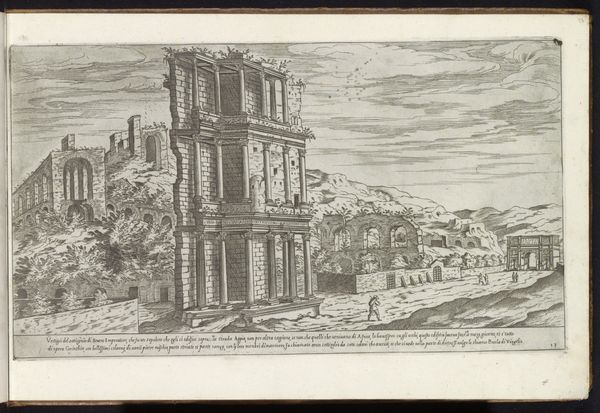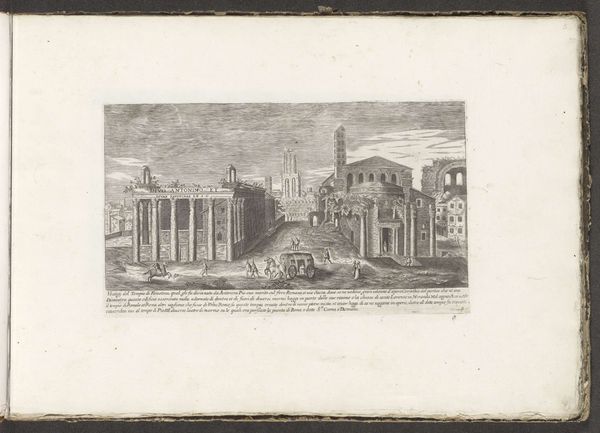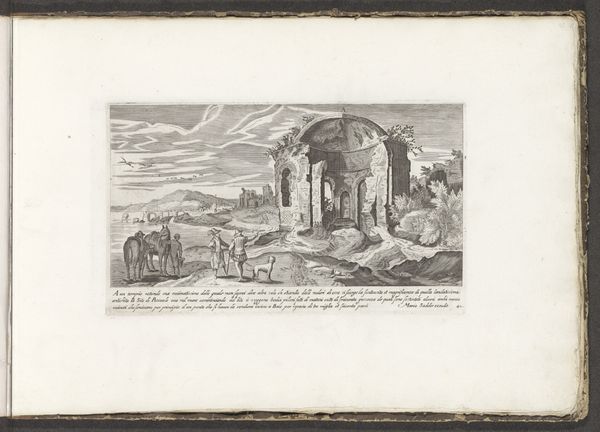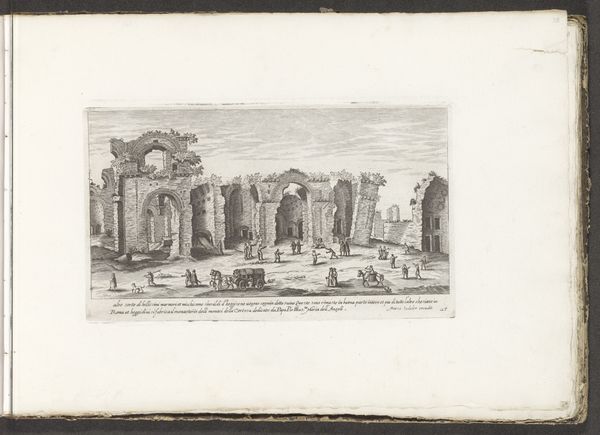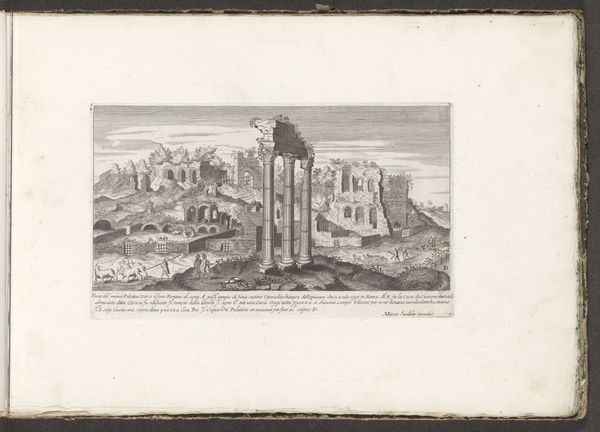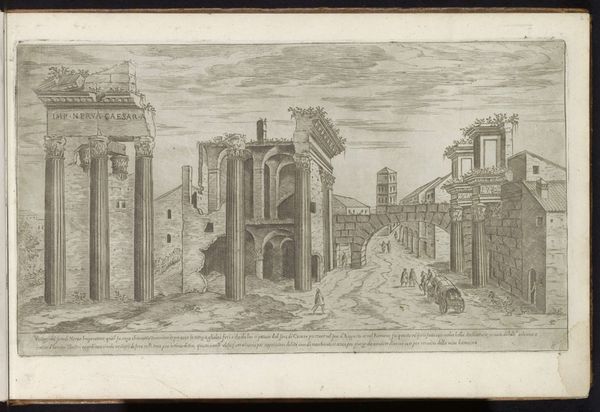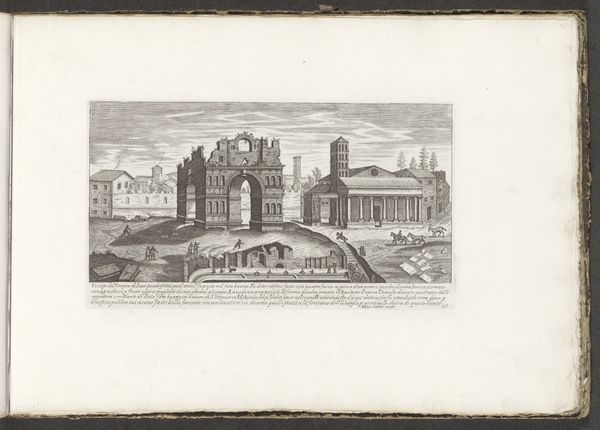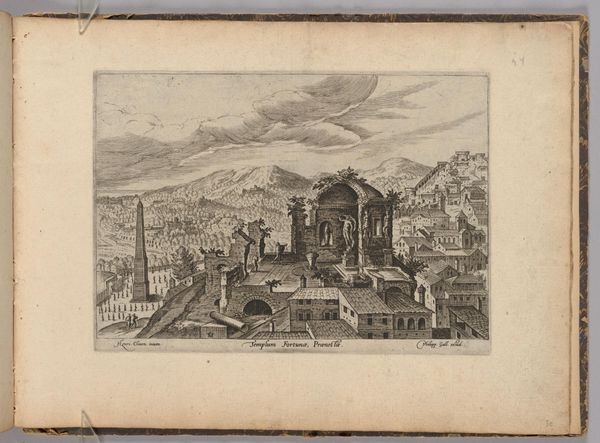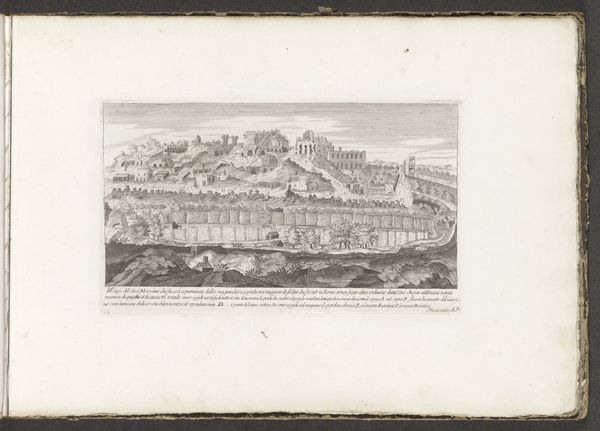
print, engraving, architecture
#
baroque
# print
#
cityscape
#
history-painting
#
engraving
#
architecture
Dimensions: height 157 mm, width 266 mm
Copyright: Rijks Museum: Open Domain
This print shows the ruins of the Septizonium in Rome. It was made anonymously, probably in the 17th century. The Septizonium was a grand facade built by Emperor Septimius Severus in the late 2nd century CE. This image reminds us of the complex relationship between power, memory, and the representation of history. In depicting the ruins, the artist is making a statement about the transience of earthly power and achievements. Rome, once the center of a vast empire, is now reduced to rubble. This imagery was particularly powerful in the 17th century, a time of great political and religious upheaval. European powers were vying for dominance, and the Catholic Church was struggling to maintain its authority in the face of the Protestant Reformation. To better understand the work, we can delve into archaeological records, historical texts, and other visual representations of Rome to understand the symbolic significance of the Septizonium and its ruins. In doing so, we can understand art's role in interpreting and transmitting historical knowledge.
Comments
No comments
Be the first to comment and join the conversation on the ultimate creative platform.
